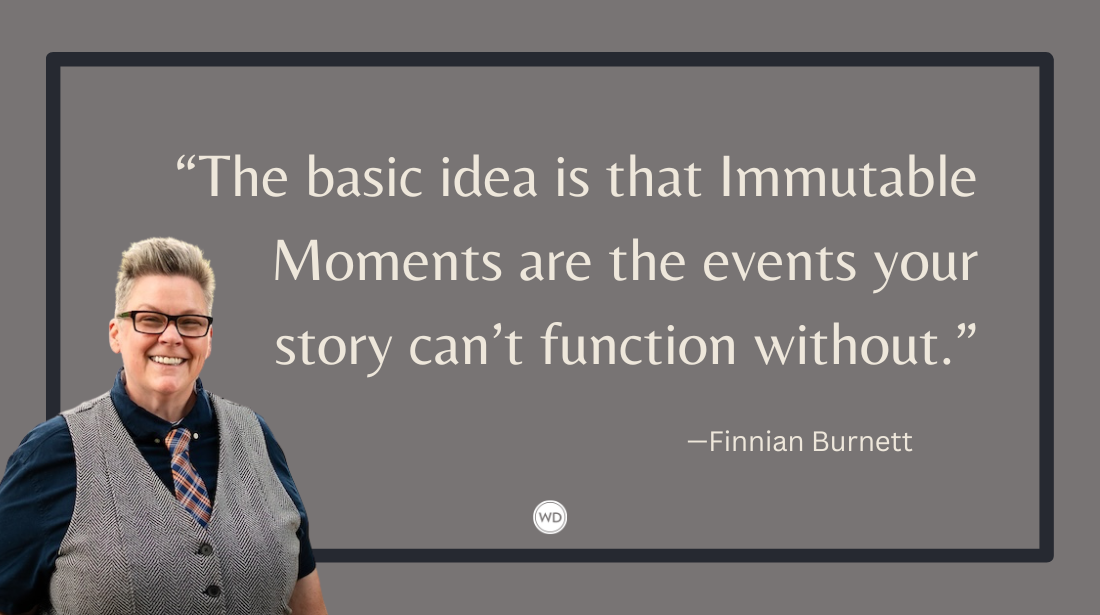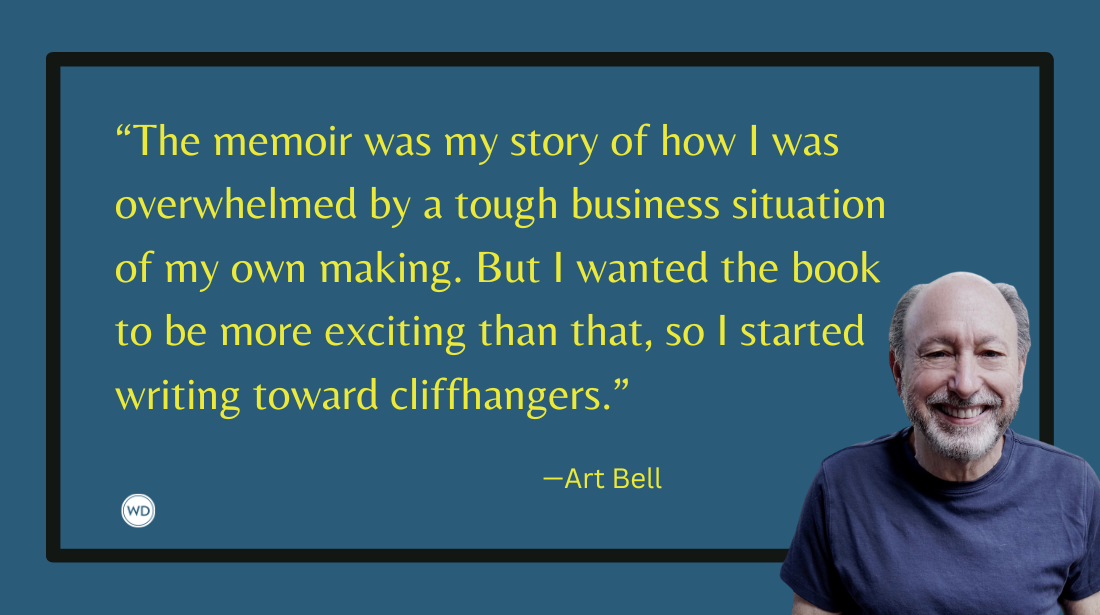The Anatomy of Cozy Charm
How to write a cozy that charms the socks off your readers.
[This article first appeared in the November/December 2024 issue of Writer's Digest magazine.]
Some cozy mysteries are playful and humorous (despite a corpse or two). Others are erudite and resolute. Wherever your cozy falls on the spectrum of light-hearted to serious, all successful cozies are laden with charm. While the concept of charm is intangible, and thus hard to define, we know it when we see it because of how it makes us feel. Charm is soothing and homey. Reading a cozy mystery is as comforting as wearing a favorite old sweater on a cold winter day.
Of the five factors that successful cozy mysteries share, three are clear-cut. While not necessarily easy to execute, the parameters are unambiguous. The other two, though, require deft handling. Here are the three that are straightforward:
- A wholesome tone with no graphic anything—no on-stage violence, no gory descriptions, no explicit sex, and no cussin’.
- A killer and victim who know one another, leading to a motive that’s personal, not random. Motives can run the gamut from greed and fear to revenge and hate, among others.
- A solution that depends on the sleuth’s deductive abilities, not forensics.
The two remaining factors are:
- An amateur or semi-amateur sleuth who has a viable reason to poke her nose in other people’s business.
- A setting filled with quaint and unique elements.
To add that elusive quality of charm to your cozy mystery, focus on your sleuth and your setting.
The Charming Sleuth
Think of the most charming person you know, then ask yourself why that person came to mind. What is it they do or say that makes you think of them as charming? Here’s what I bet you came up with: They care about people in general and you in particular. They treat everyone with dignity and respect, including themselves. They’re strong, but not domineering. They’re generous, but not a pushover. Imbue your sleuth with these qualities, and you’ll have created a character readers adore. The trick is translating these abstract concepts into concrete behaviors and attributes—to show, not tell.
First, consider why your sleuth is good at detective work. Is it their observation skills, their specialized expertise, or their understanding of human nature—or some combination of the three? As you review the following examples, think about how these jobs and leisure activities might facilitate a sleuth ferreting out secrets, the heart of detective work, all while showcasing their charm.
- A local reporter, like Jaye Jordan in Nikki Knight’s Live, Local, and Dead mystery series
- The owner of a small business, like Addie Greyborne, who owns a bookshop, in Lauren Elliott’s Beyond the Page Bookstore Mystery series, or Izzy Chambers Perry, who owns the Sea Harbor Yarn Studio in Sally Goldenbaum’s Seaside Knitters Society Mystery series
- A chef, like Henry Ross in Peter King’s Gourmet Detective mystery series1
- A restaurant manager, like Lana Lee in Vivien Chien’s Noodle Shop mysteries
Whatever their occupation or avocation, charming amateur sleuths show genuine interest in the people and situations around them. When chatting, your sleuth maintains eye contact. She doesn’t scan the room looking for someone more interesting to talk to. He doesn’t check his phone while having lunch with a pal. On a video call, she wouldn’t look down, surreptitiously reading an email while her friend is describing a fight with her husband.
To understand how to translate this imperative—focus on the here and now—into concrete actions, adapt the protocol known as active listening. While this four-step process is designed to increase communication efficacy, sleuths who use this approach don’t merely get people talking and keep them talking, both of which crucial, they themselves are valued as caring, concerned citizens.
The Active Listening Process
“Active listening” refers to a communication technique developed by Dr. Thomas Gordon in the 1950s. He coined the term in his book, Leader Effectiveness Training. When a sleuth uses words and phrases such as these at each of the four steps of the active listening process, readers perceive him or her as charming.
- Encourage
- Tell me more about ... ?
- I’d love to hear your thoughts about ... ?
- Get the facts
- What do you think happened?
- Why did you decide against ... ?”
- Paraphrase
- So, you’re saying Mary plans on signing the lease on Thursday, is that right?
- You seem confident that George will be happy in the new condo.
- Summarize
- Then the next step is ...
- Your recommendation is ...
.....
Your sleuth should also employ “minimal encouragers,” short phrases that motivate people to confide in him. Minimal encouragers subliminally signal your sleuth’s interest in what people have to say, which is, of course, a primary component of charm. Minimal encouragers include actions like smiling, nodding, and employing verbal reactions, such as:
- “You’re kidding!”
- “Mmhmm.”
- “Really?”
- “I see.”
- “Then what?”
Another reliable way of adding charm is to capitalize on your sleuth’s ability to intuit what people are truly thinking or feeling. By mirroring the observed or unspoken thought or emotion in dialogue, the person your sleuth is talking to will feel respected and valued, core ingredients of charm. For instance, let’s say a character named Sally confides to your sleuth, Carole, that a date stood her up. Carole might reflect the unspoken emotion with an empathetic reaction. An important note: It’s not enough for Carole to know Sally got stood up—she needs to know how Sally feels about it. Is Sally furious, embarrassed, sad? Carole, reading between the lines, registering Sally’s tone of voice, listening for what isn’t said, might respond to Sally’s confidence by saying:
- “Have you killed him yet?” (emotion reflected = rage)
- “Ouch. That’ll put you on track to polish off a quart of double-chocolate Ben and Jerry’s.” (emotion reflected = embarrassment, shame, or self-loathing)
- “When I need a good cry, I watch An Affair to Remember. How about you?” (emotion reflected = sadness)
Charm Killers
A charming sleuth would never:
- Use the word should
- Criticize (“That was dumb.”)
- Speak in an aggressive or skeptical tone
- Dismiss someone’s worries
- Offer platitudes
.....
Among the most effective ways to add charm is to give your amateur sleuth a beloved pet. In Paula Munier’s Mercy Carr series, Mercy adopts Elvis, a Belgian shepherd with canine PTSD. Morgan Carter, a bookstore owner and cryptozoologist, in Annelise Ryan’s Monster Hunter mystery series, adores Newt, a rescue dog of uncertain lineage. Cats are even more popular in cozies than dogs, including Moishe in Joanne Fluke’s Hannah Swenson’s mystery series and Sneaky Pie Brown, the co-author, with Rita Mae Brown, of the Mrs. Murphy mysteries. Anything that humanizes your sleuth and shows their caring nature will work to add charm. Give them a volunteer job at a local nonprofit. Have them work at a community garden.
Weaving these qualities and behaviors together creates a full-bodied, believable, and charming character, and those are the sleuths readers adore.
Choose a Charming Location
Most cozy mysteries take place in self-contained communities. This guideline serves several charm-inducing purposes, both logistical and thematic.
From a logistical perspective, charm derives from contented familiarity. Knowing that character A takes a walk along the river at 8 o’clock sharp every morning or that character B, locally renowned for his moody paintings of meadows, sets up his easel on the village green on foggy days, provides welcome predictability, a comforting rhythm to daily life. In addition, this kind of consistency ensures your sleuth will have plenty of suspects that she knows well to consider—and she’ll know where to find them. Your sleuth also knows the lay of the land, the secret spots where people go to hide or brood.
Thematically, cozies are, at their essence, stories about finding community. A place where people value you for who you truly are, where you don’t need to pretzel yourself to fit in. Dr. Brené Brown2, a research professor at the University of Houston and one of the world’s leading experts in making meaningful connections, puts it this way: “Fitting in and belonging are not the same thing. In fact, fitting in is one of the greatest barriers to belonging. Fitting in is about assessing a situation and becoming who you need to be in order to be accepted. Belonging, on the other hand, doesn’t require us to change who we are; it requires us to be who we are.” When we feel valued for who we truly are, we’re charmed.
Insular Settings Enhance Charm
A bucolic hamlet. An English country house. An island resort. When it comes to choosing an insular location, the possibilities are endless. As you review the following locations (with corresponding examples), consider how each lends itself to the requisite logistics and supports the theme of belonging.
- A small town or village
- Alexia Gordon’s Murder in G Major: A Gethsemane Brown Mystery
- A train traveling along an isolated route
- Agatha Christie’s Murder on the Orient Express: A Hercule Poirot Mystery
- A cruise ship
- Elaine Viet’s Final Sail: A Dead-End Job Mystery
- A coffee shop in a big city
- Cleo Coyle’s Bulletproof Barista: A Coffeehouse Mystery (Note that neighborhoods within a large city can offer the same kind of self-contained environment as a small town.)
- A mountain lodge
- Diane Kelly’s Snow Place for Murder: A Mountain Lodge Mystery
- An assisted living facility
- Richard Osman’s The Bullet That Missed: A Thursday Murder Club Mystery
.....
You create this welcoming environment by adding elements to the setting that evoke comfort, delight, and serenity: the aroma of fresh-baked bread, a lake dotted with sun-sparks dancing on the surface, the soft feel of a cotton quilt, the taste of cinnamon in the homemade applesauce, a kitten’s purr. Notice that all five examples include sensory references. Writing these charming elements using sensory cues brings everyday items and events to life.
Where in the World Are You?
As you think about where to set your cozy mystery, start with determining your era and location. Do you want to set your mysteries in Rome at the turn of the century? Victorian England? The near future?
Cozy mysteries don’t need to be set in the present. Historical cozies abound. Consider, for example, Margaret Frazer’s Sister Frevisse Medieval Mystery series, where the sleuth is a nun during the reign of Henry VI (Medieval England). In Sujata Massey’s Perveen Mistry mystery series Perveen Mistry is a young lawyer in 1920s Bombay, one of the first women admitted to the bar.
You don’t even need to feature humans in your mystery for it to work as an über-charming cozy. In Juneau Black’s Shady Hollow mysteries, the sleuth is a newspaper reporter named Vera Vixen, a fox. The woodland setting, in an unnamed boreal forest, is home to a delightful array of quirky characters, from Gladys Honeysuckle, a gossipy hummingbird, to Joe, a moose with “quite a mug,” who runs the local coffee shop named Joe’s Mug, to a brown bear named Orville Braun, the deputy chief of police, and a parade of other critters each with a distinctive personality. Interestingly, Shady Hollow’s era is unclear, but we know it’s not contemporary, since Vera develops film in a darkroom, and no one uses a cellphone or computer.
Whatever era and location you choose, identify familiar elements that enable readers to immerse themselves in your world.
.....
To bring a setting to life, add in information that goes beyond the physicality of a place. Yes, readers want to know the geography of the location, to smell the briny air at a seaside enclave, hear the rain pattering the metal roof at a mountain resort, feel the searing summer sun in a sleepy desert outpost, taste blackberries plucked from bushes in a California commune, and see palm fronds waving in a tropical oasis, but infusing your story with charm requires that you take a holistic view of the setting. Use the following four questions (and examples) to fire up your imagination.
1. What languages and dialects are spoken? Are there idioms, terminology, slang, or abbreviations specific to the region? Does everyone in the location know and use the local vernacular?
- South Carolina’s Gullah Geechee
- Hawai’i’s Pidgin
- New England’s frappe (milkshakes elsewhere). In your location, would they order a sub, a hero, a hoagie, or a grinder?
- Louisiana's Cajun
2. What are regional or local food favorites? Is there one resident's specialty that's renowned? Are there contests or competitions?
- Colorado's mountain trout
- South Dakota’s kuchen
- Caribbean jerk
- Chili cook-offs
3. Is there a musical style or instrument common to the region? Are there regularly scheduled musical events?
- Kentucky’s bluegrass
- Louisiana’s zydeco
- Police and fire departments’ bagpipe bands
- Karaoke at a local tavern
4. What cultural or community events occur periodically or annually?
- Dushore (Pennsylvania) Founder’s Day celebration
- Cannon Beach (Oregon) Sandcastle Contest
- Mansfield (Texas) Pickle Parade
- Hermann (Missouri) Wurstfest
Bringing together seemingly disparate factors such as culture, language, habits, standards, values, customs, food, mores, pace of life, and so on, creates a delightful world readers can envision, a place they want to visit and where they’re glad to stay a while.
Three More Ways to Add Charm to Your Cozy Mystery
Recipes
Many cozies include references to food and drink, a crowd pleaser certain to engender kinship. Several actually include recipes. In Diane Mott Davidson’s Goldy Schulz mystery, Catering to Nobody, you’ll find recipes for “Goldy’s Marvelous Mayonnaise” and “Wild Man’s Wild Rice Salad,” among others. Laura Childs’s Lemon Curd Killer: A Tea Shop Mystery includes both recipes and “tea time tips.” Mia P. Manansala’s Tita Rosie’s Kitchen Mysteries feature Filipino American cuisine that the Washington Post described as “mouth-watering.”
Quirky Characters
Cozies usually include an ensemble cast comprised of quirky characters. According to the Merriam-Webster dictionary, quirky refers to a personality attribute, behavior, or mannerism that’s “unusual in [an] interesting or appealing way.” Consider how characters like these would spice up your cozy mystery:
- Celeste, a home health care aide has sky blue hair and a cluster of stars tattooed on her neck
- Kyle, owner of a small-town hardware store, proudly touts his “causes” with bumper stickers and shop window signage espousing: “Save Our Coral Reefs” and “Clean Up the Beach”
- Lizbeth, a retiree, wheels her miniature poodle around town in a pet carriage. The poodle, Trixie, wears stylish girlie outfits and pink bows in her fur.
Puns
Many cozy mystery titles include puns. These titles don’t simply identify the book’s theme or focus, it also alerts readers that a humorous and light-hearted tone will balance the sadness of the murder. Consider these examples as you work on your own thematic puns.
- Donna Andrews’s Meg Langslow mystery series’ titles include puns related to birds: Round Up the Usual Peacocks, Between a Flock and a Hard Place, and Cockatiels at Seven.
- The titles in the David Rosenfelt’s Andy Carpenter Mystery series’ use puns that reference dogs, such as Dachshund Through the Snow, Bark of Night, and Dog Day Afternoon.
- The puns in Nora Page’s Bookmobile Mystery series’ titles allude to reading: Better Off Read, Read on Arrival, and Read or Alive.
.....
Cozy mystery readers want to feel part of a caring community. You create this allure by building a delightful, self-contained world populated by an engaging sleuth to create the kind of charm that knocks readers socks off.
About Jane Cleland
Jane K. Cleland writes both fiction and nonfiction, including the multiple award-winning and long-running Josie Prescott Antiques Mysteries [St. Martin’s & Alfred Hitchcock Mystery Magazine (AHMM)] and the Agatha Award-winning bestsellers Mastering Suspense, Structure & Plotand Mastering Plot Twists [Writer’s Digest Books]. She is a member of the full-time faculty at Lehman College, part of the City University of New York (CUNY), a contributing Editor for Writer’s Digest Magazine, and the chair of the Wolfe Pack’s Black Orchid Novella Award (BONA), in partnership with AHMM. She is a frequent workshop leader and guest author at writing conferences and MFA Residencies, and she produces weekly free podcasts, The Honors Class, a series of one-minute lessons designed to help writers tell captivating stories. Website: janecleland.com. Twitter: @janekcleland








